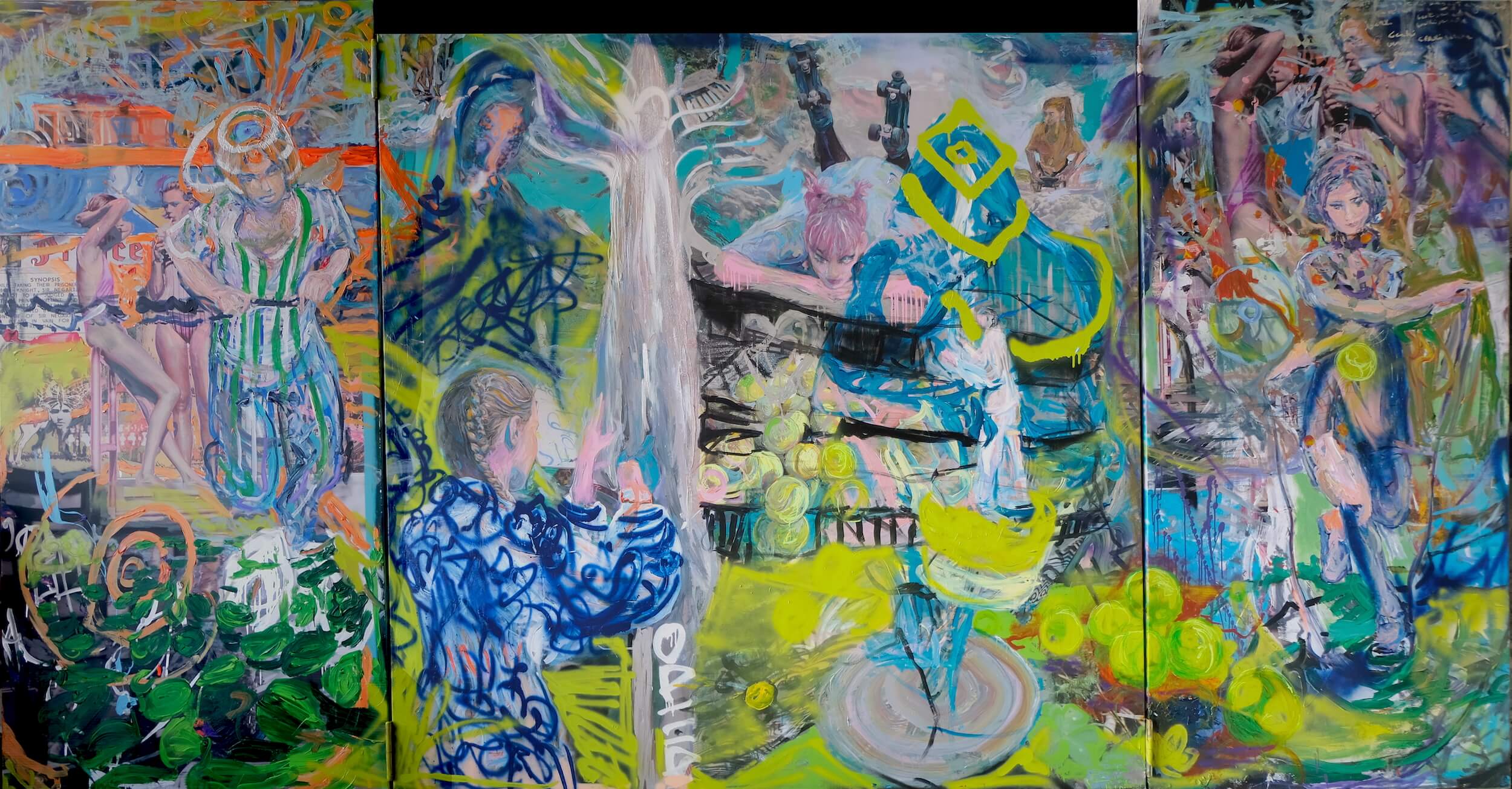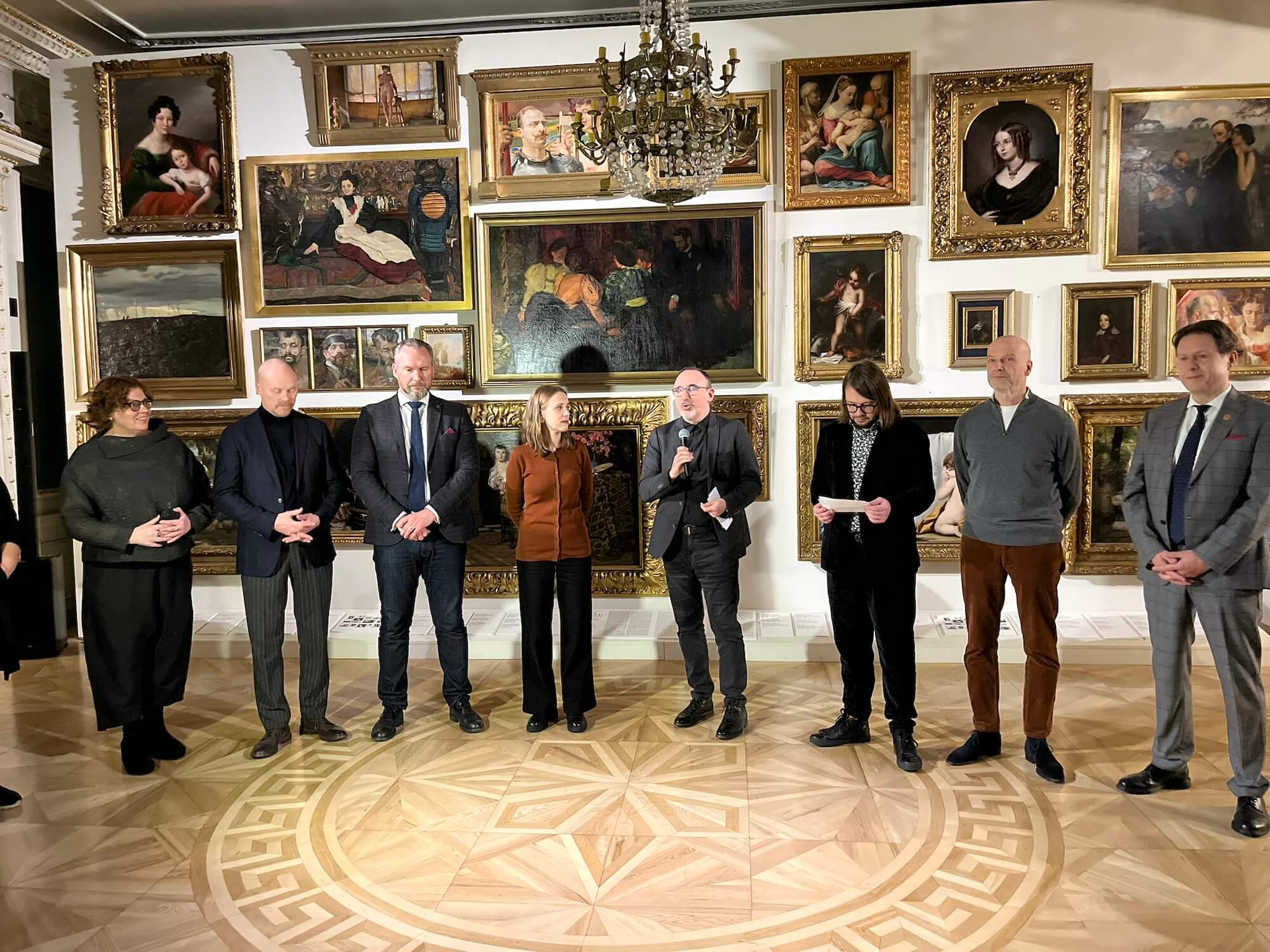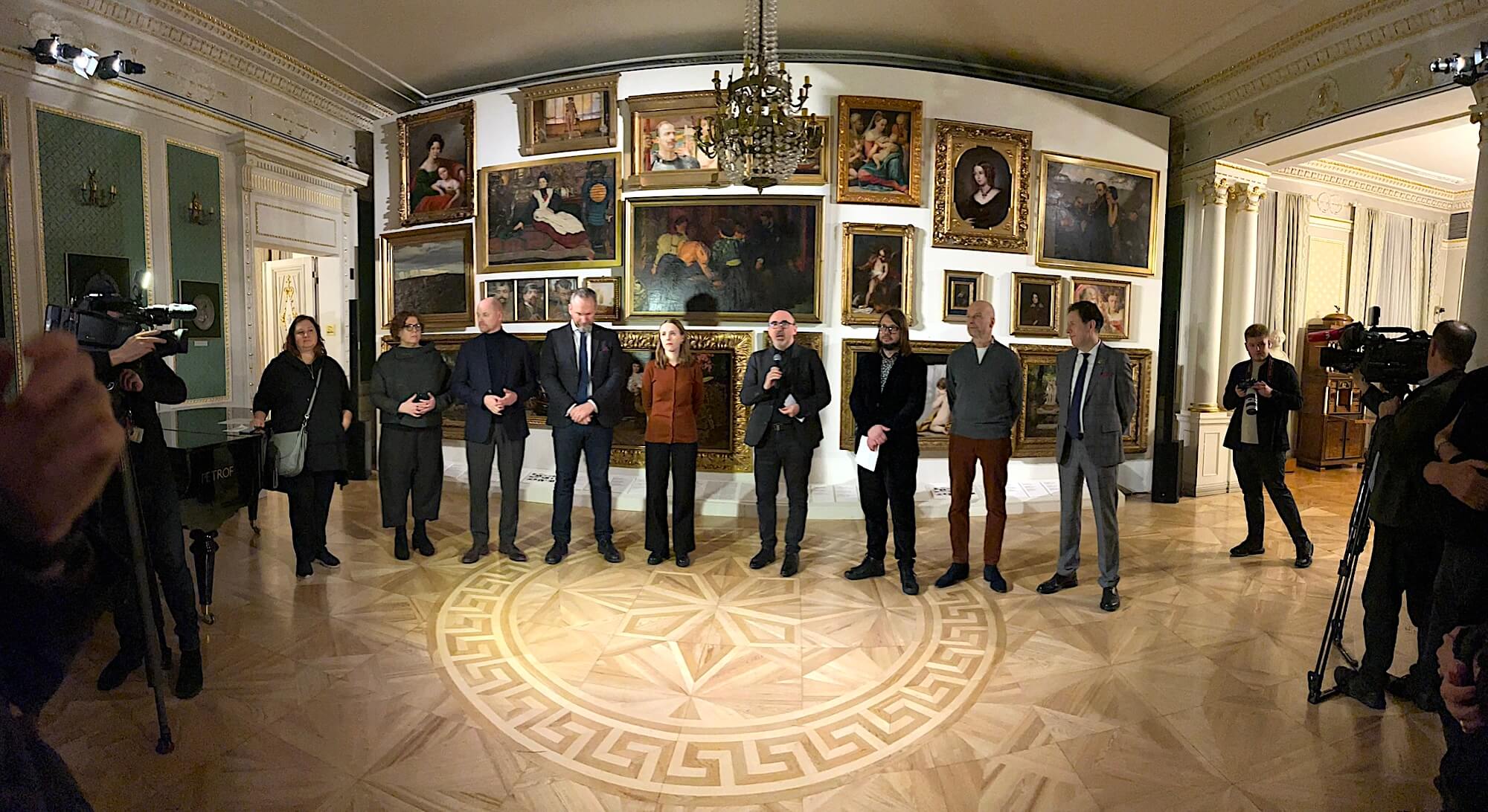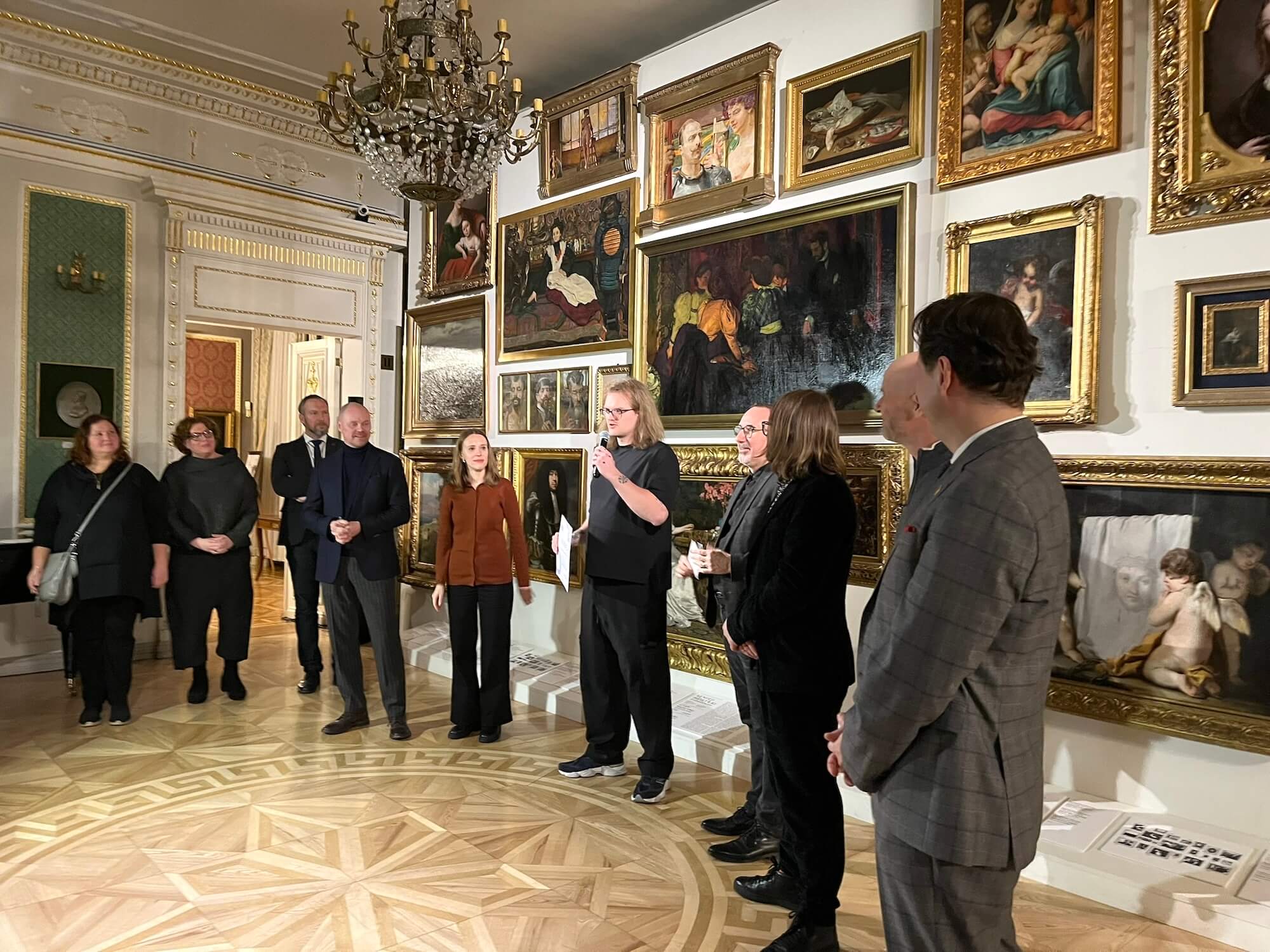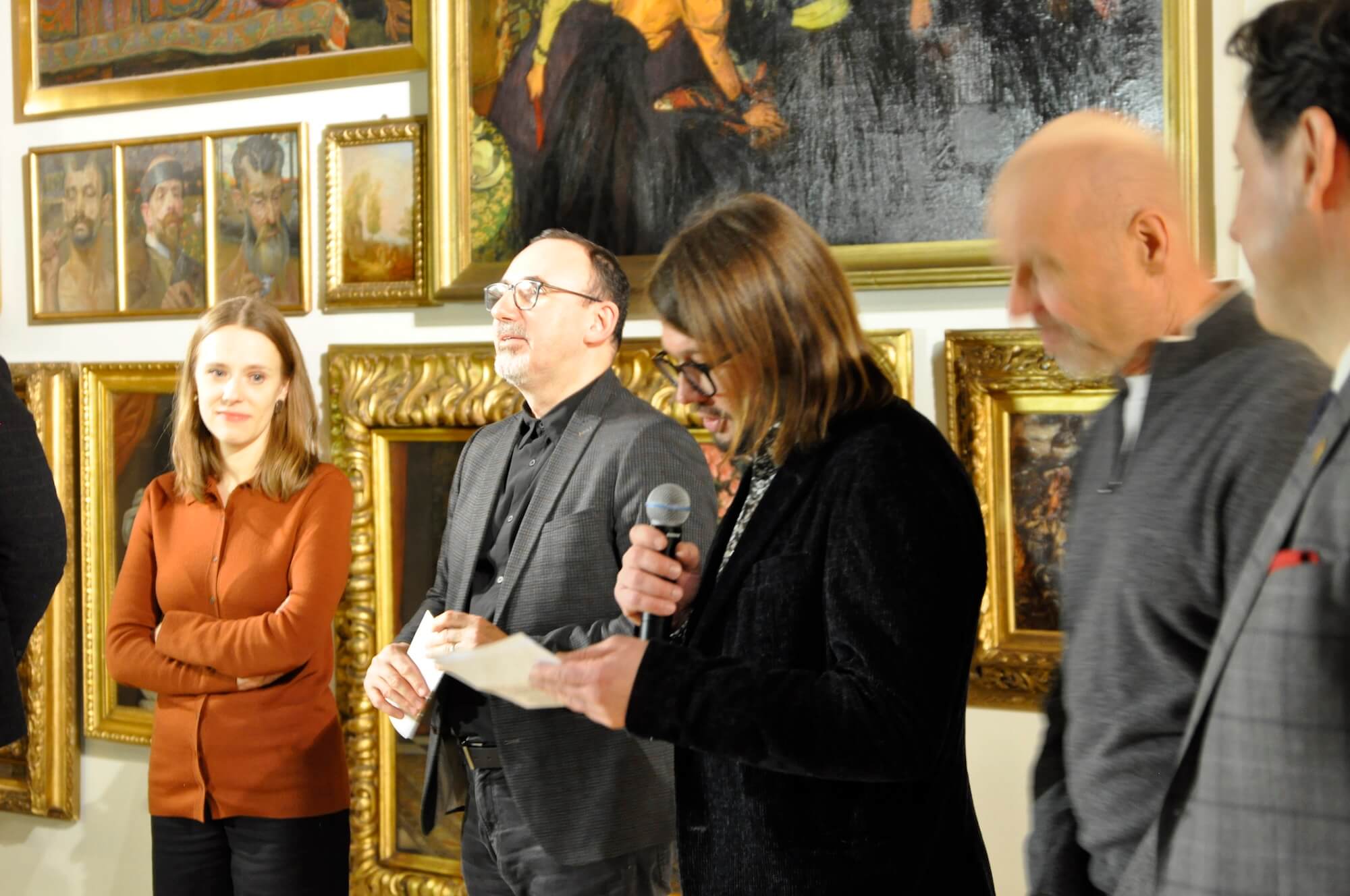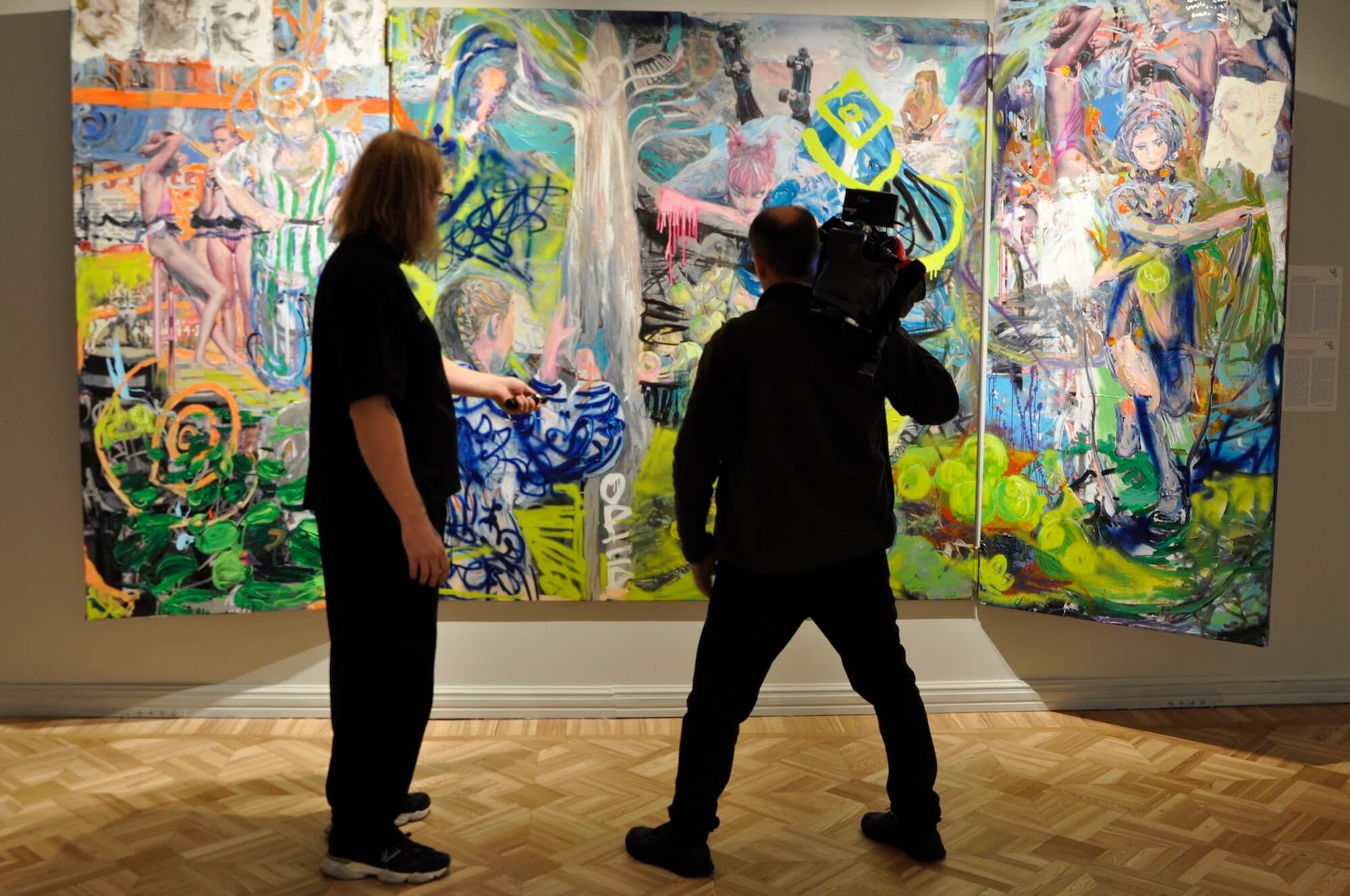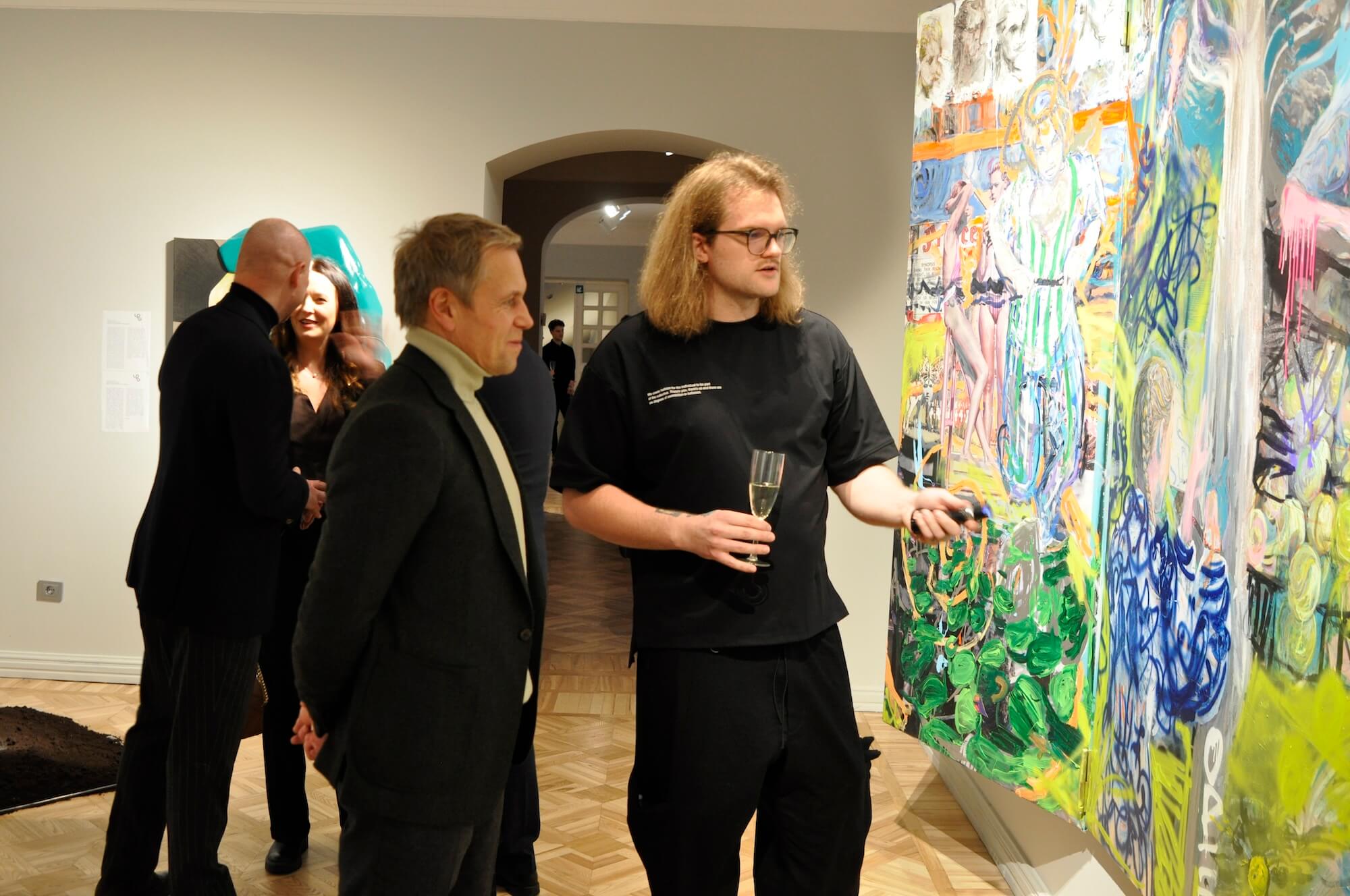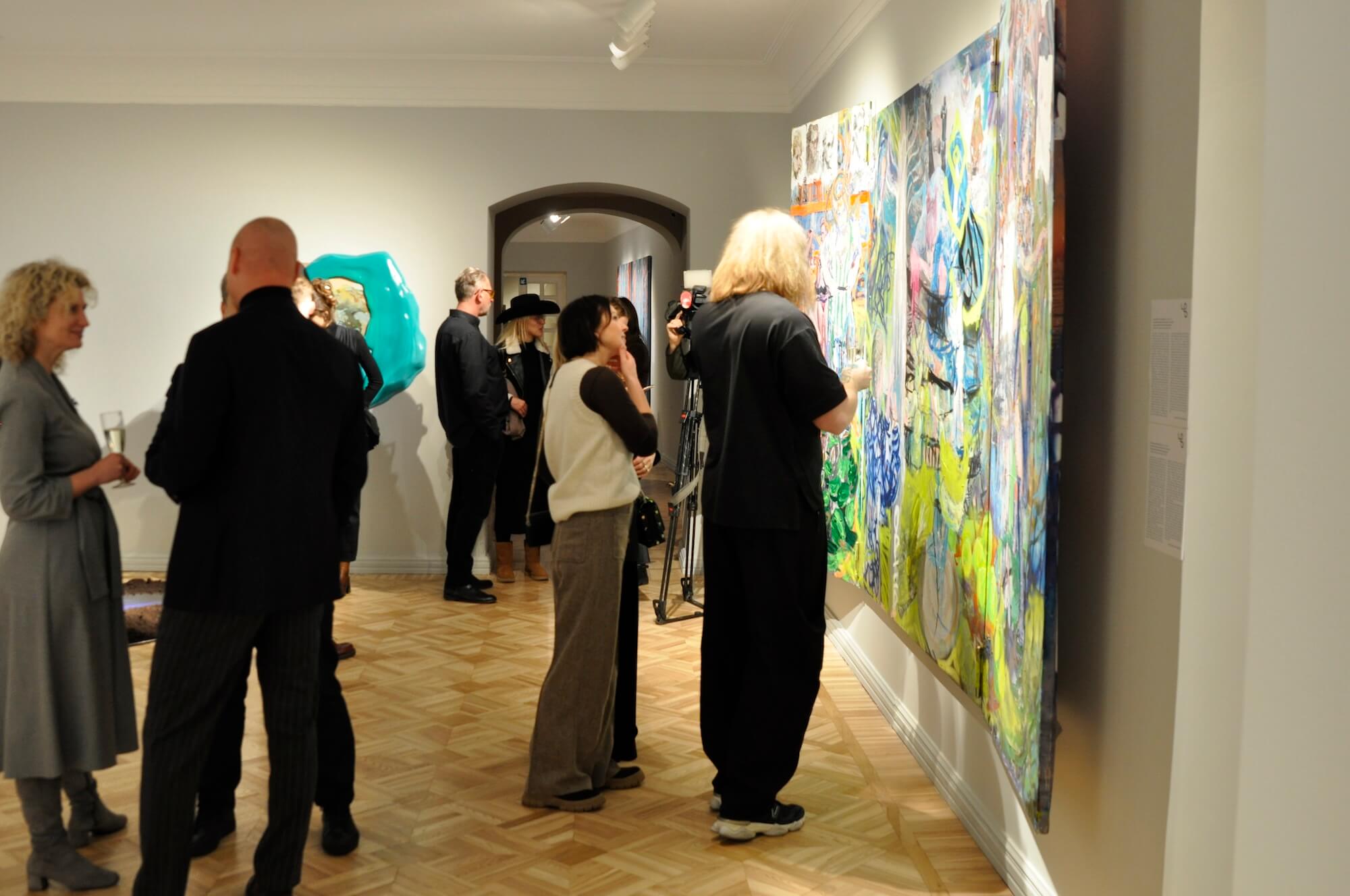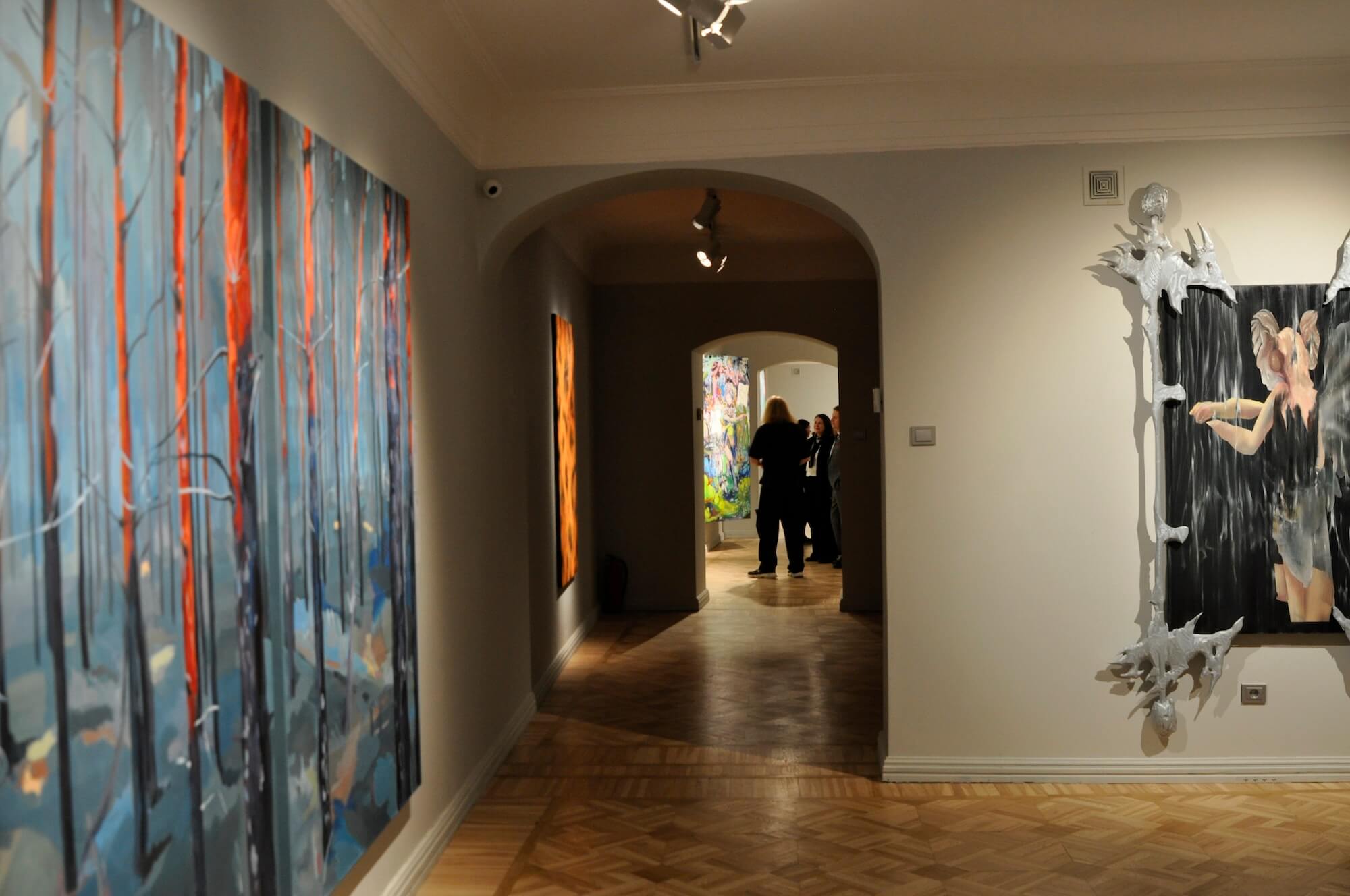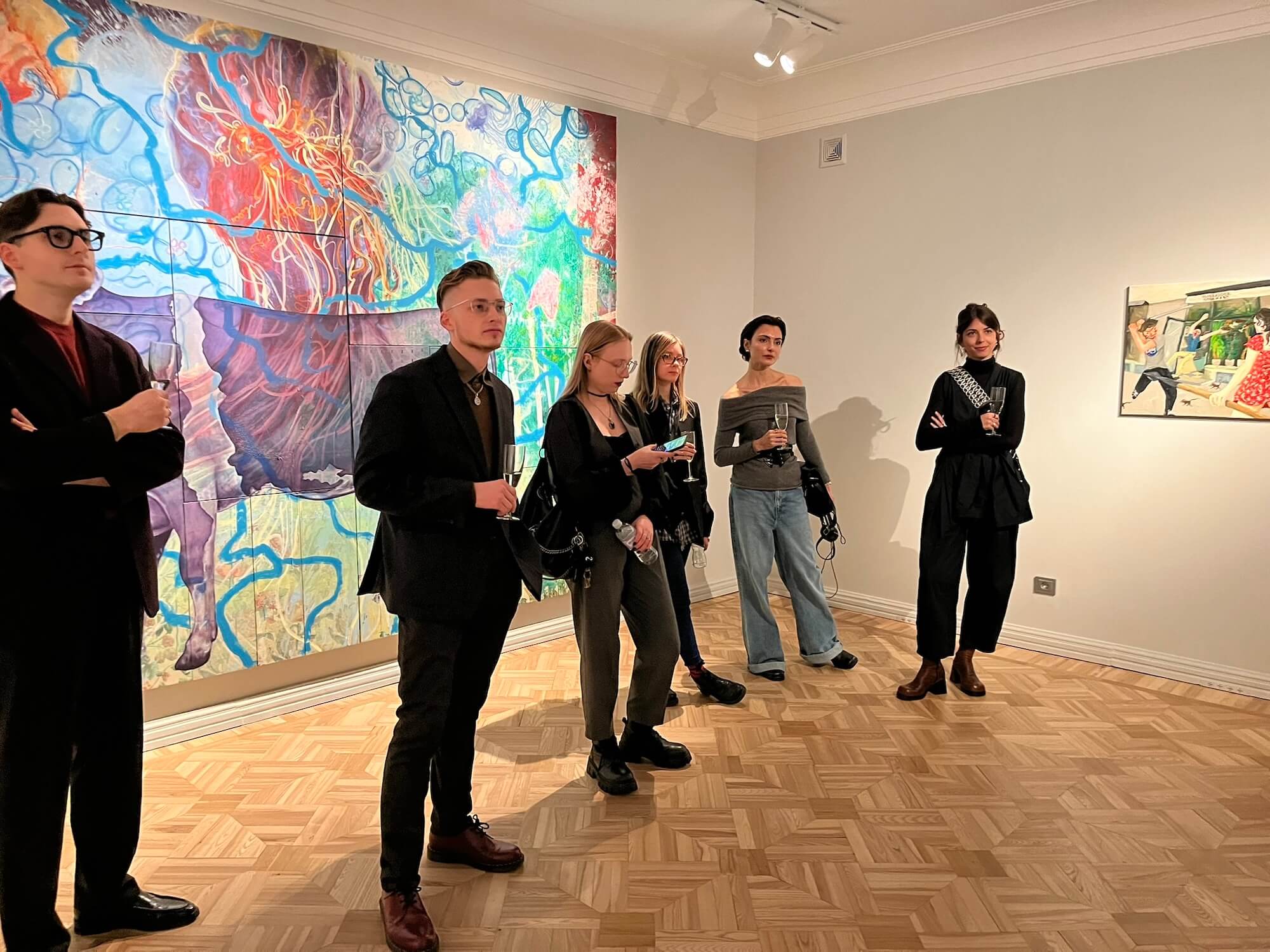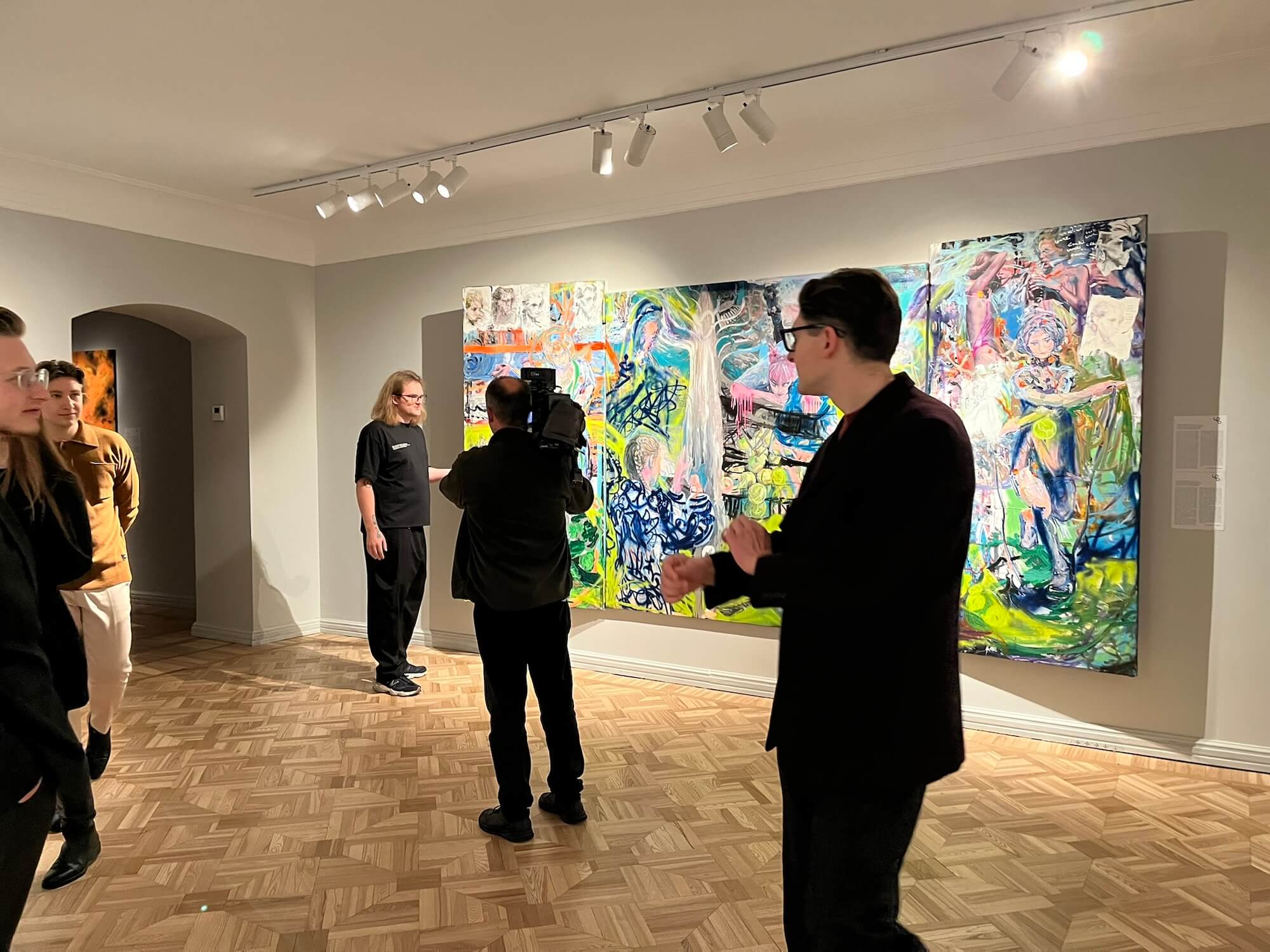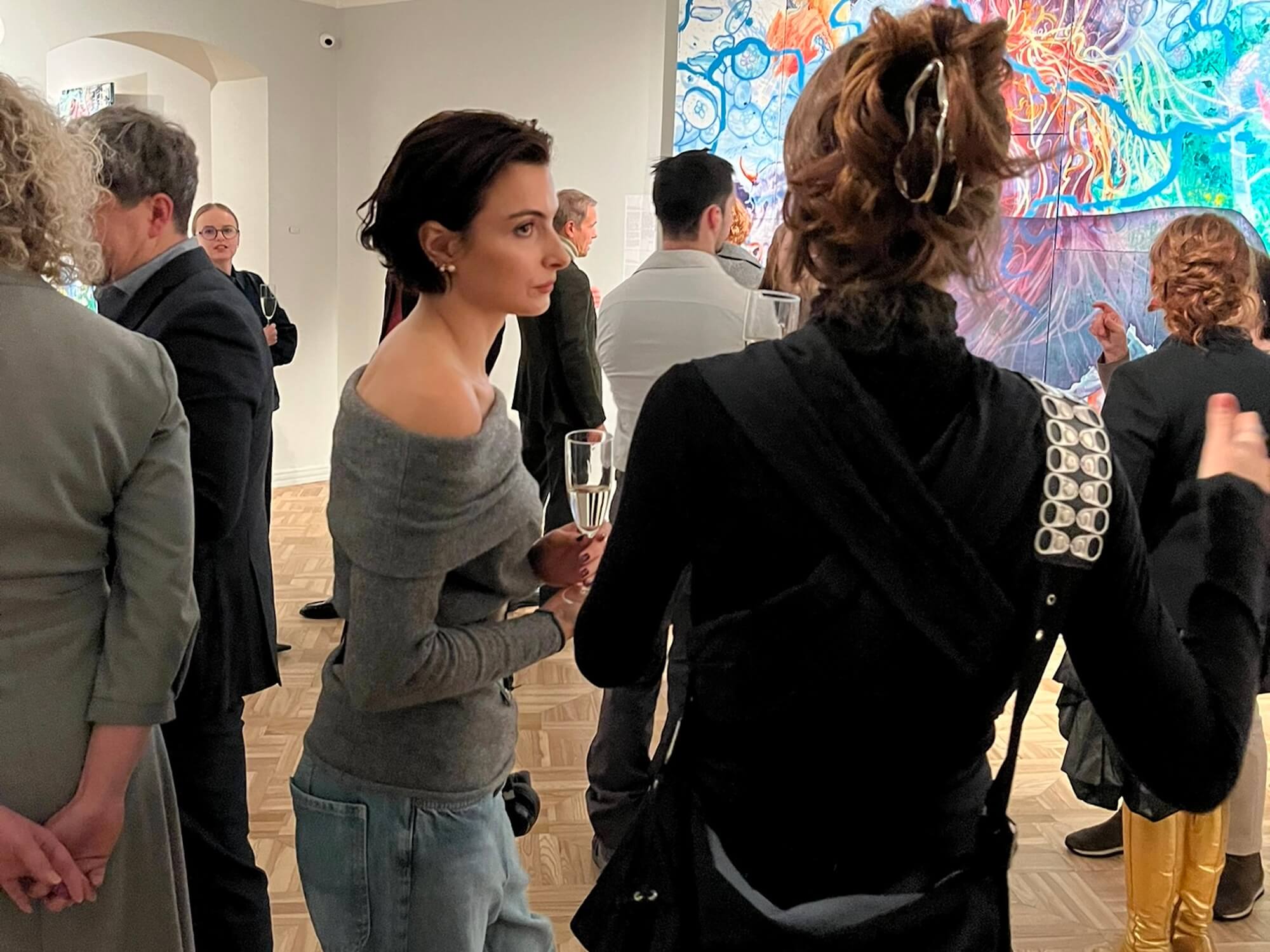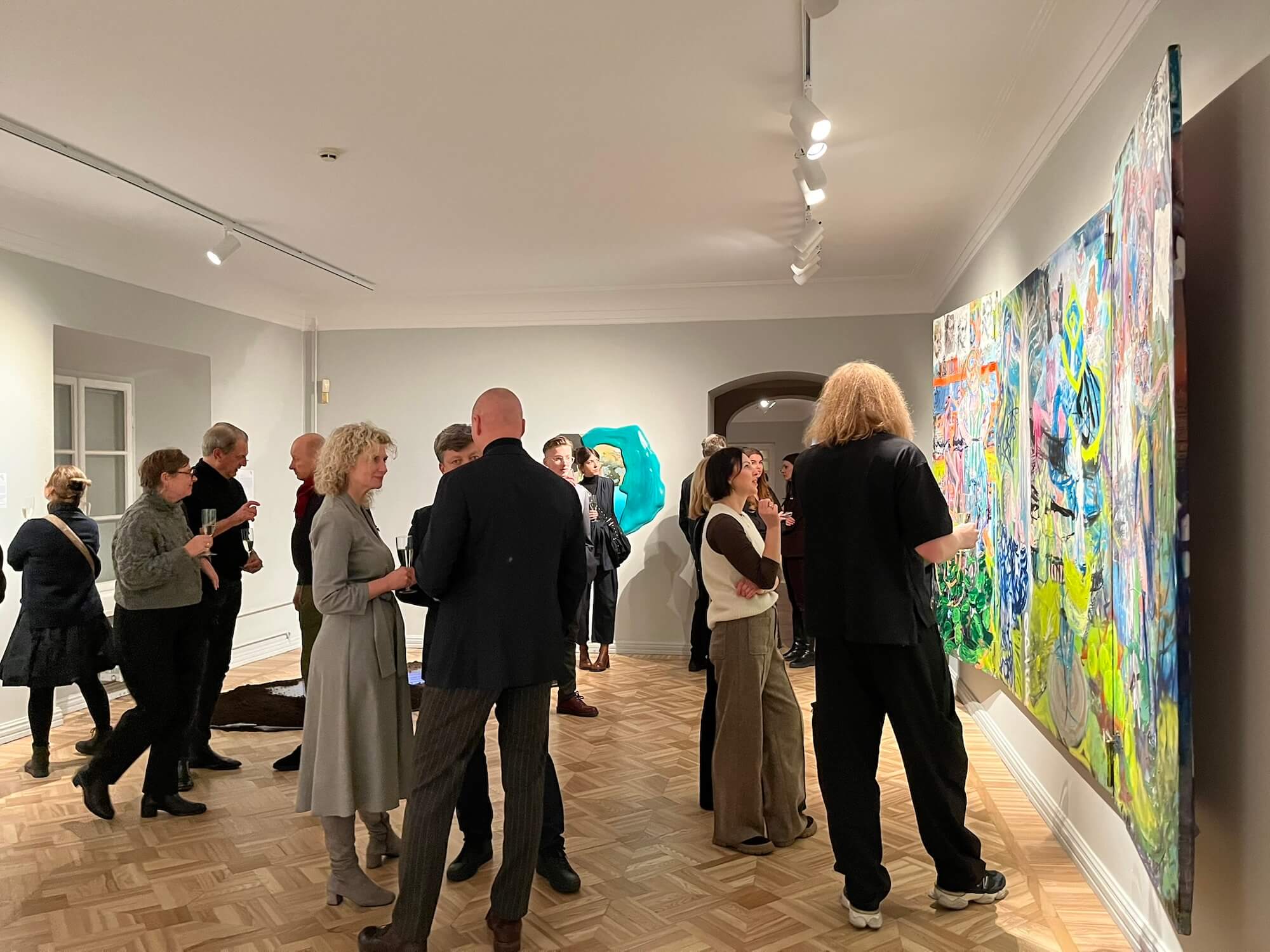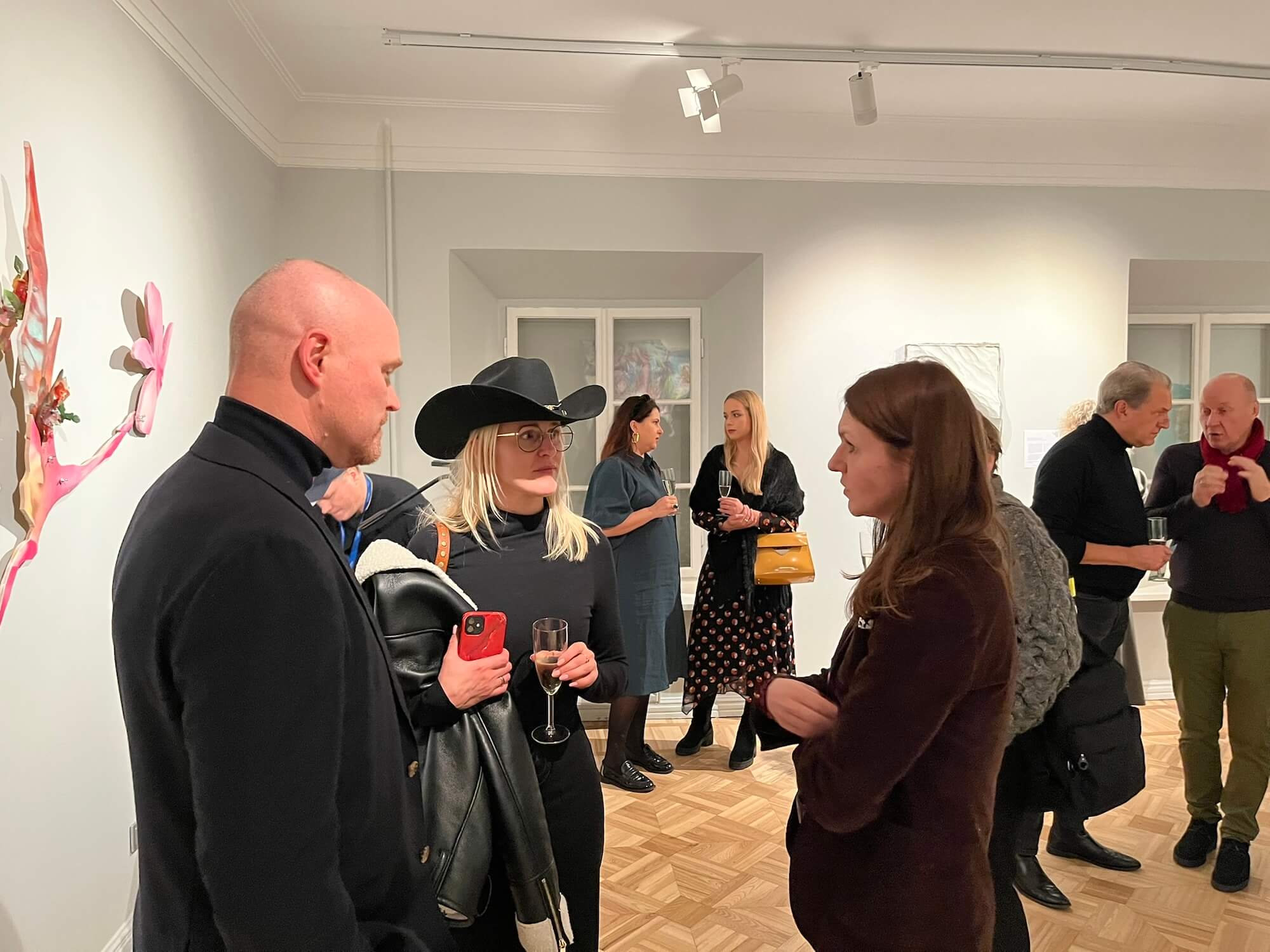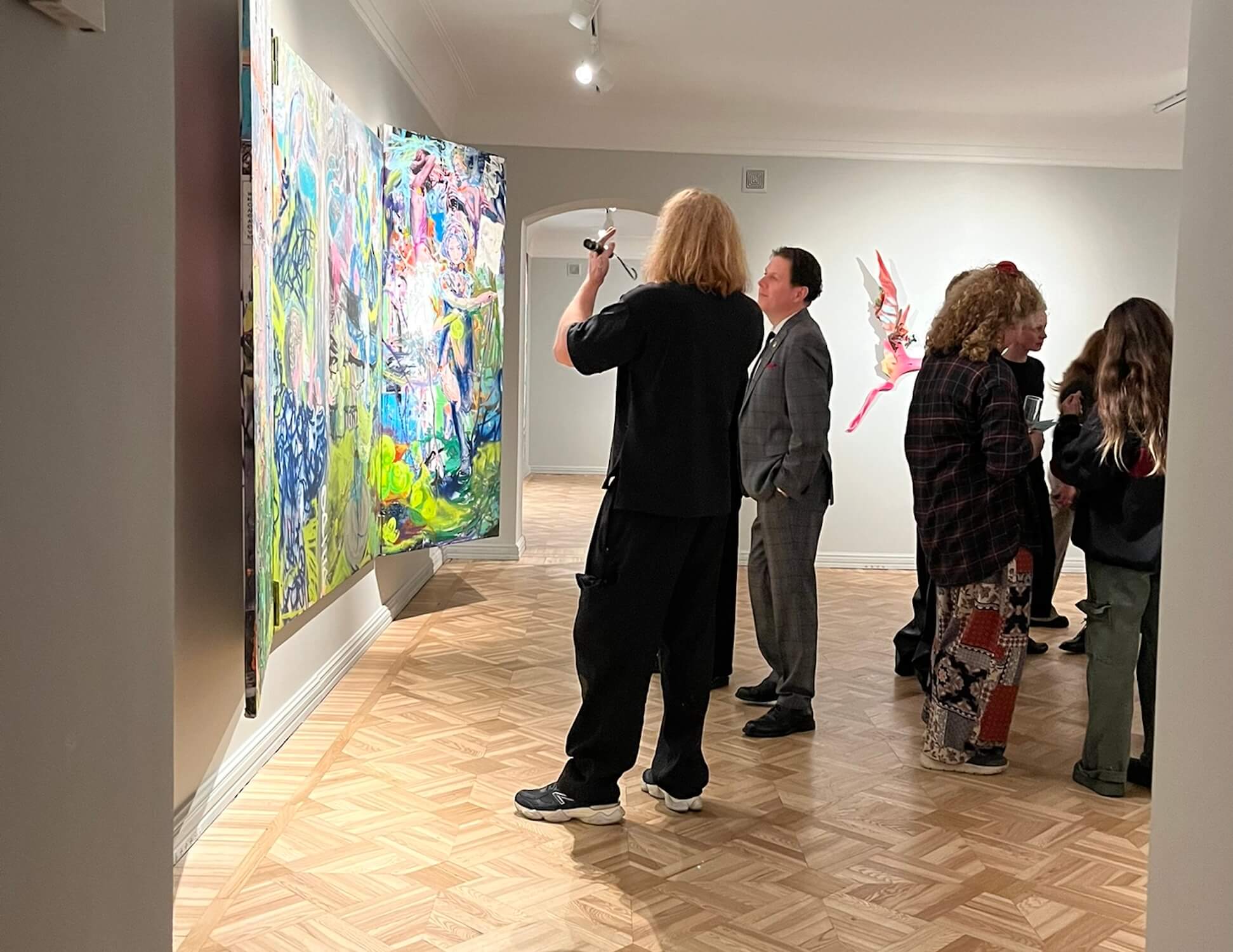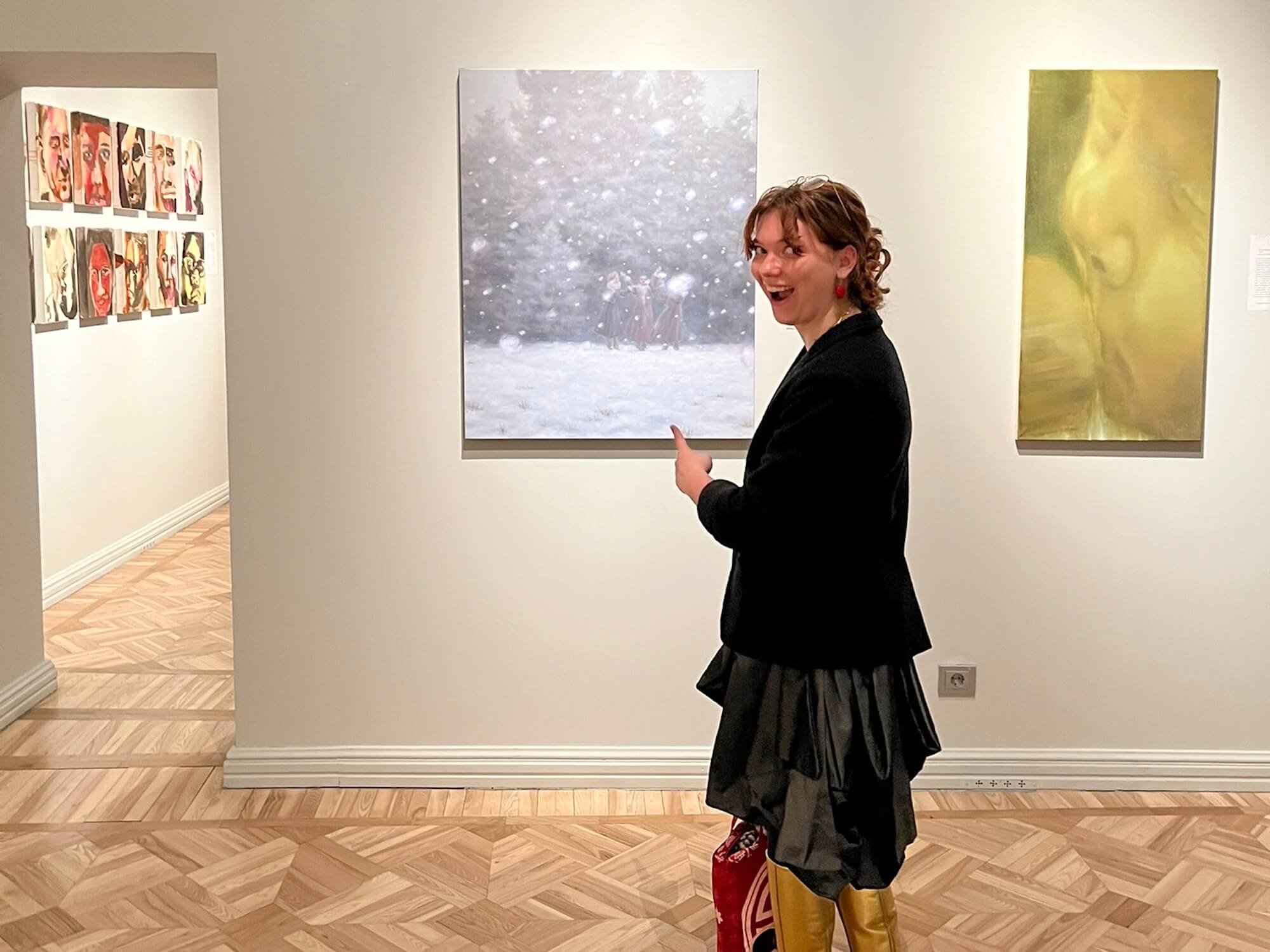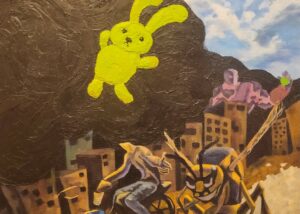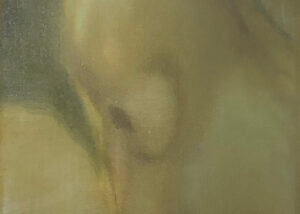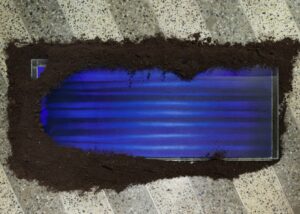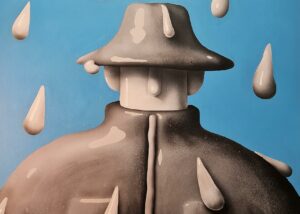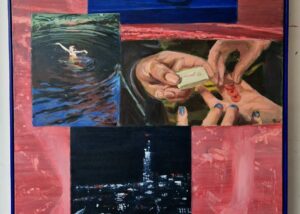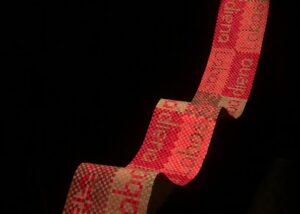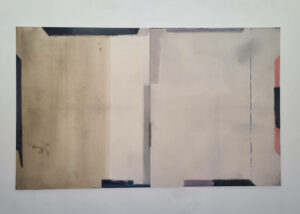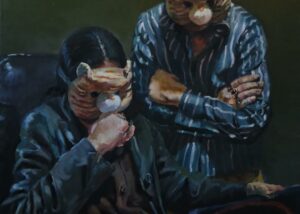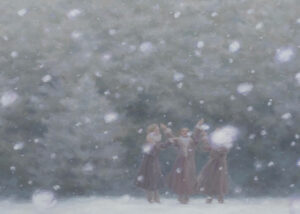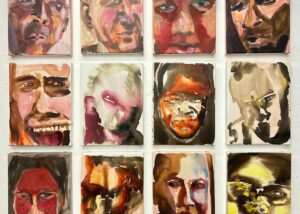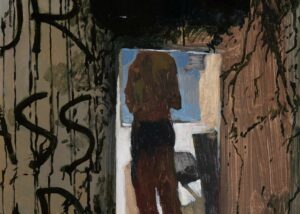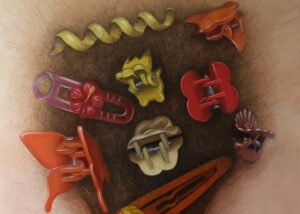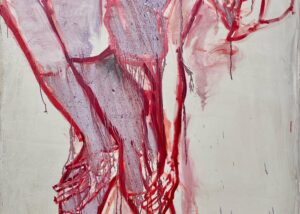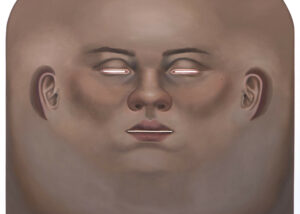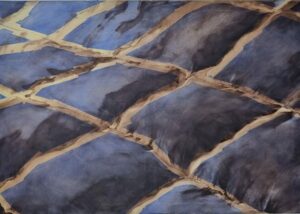Young Painter Prize 2024 winner
Tadas (Truchill) Tručilauskas
Wing altar Storyteller, Parts of time Machine 400x210cm, mixed media of painting, 2023-2024
“Wing Altar: Storyteller and the Parts of the Time Machine” is a large-scale work, measuring 4 meters by 210 cm when unfolded, folded 210cm by 200cm. For me, painting is a noble act, demanding countless days of selfless dedication. My studio becomes a sacred space a cathedral or shrine where the act of painting transcends mere creation and becomes a dialogue with time itself. Over the past few years, I’ve been particularly drawn to revisiting and transforming earlier works,
layering new brushstrokes and ideas. This practice is both constructive and destructive, as I reimagine past works, revealing and concealing different experiences that have accumulated inside and outside the studio.
The Wing Altar is my interpretation of how the Sistine Madonna might appear if extended, allowing the Cherubim to descend from the heavens and observe the natural world. The altar is composed of three main parts: the central painting, which serves as the focal point, and two side paintings that complement and expand upon the central narrative. The central painting encapsulates the essence of love in action, symbolized by tennis balls tumbling down a staircase, observed by dreamlike characters who traverse time and space, defying the boundaries between reality and illusion. These figures move in a dance of light, surrounded by a visual setting of earth and sky. The reflective pools in these paintings aren’t merely background elements; they serve as metaphysical portals, echoing the central themes of time, transformation, and celebration. Together, these components unify the Wing Altar into a singular, immersive experience. The reflective surfaces, vibrant colors,
and dynamic figures across all three paintings interconnect, inviting the viewer into an endless celebration of life, art, and the passage of time . Much like the ripples in a pool echo the impact of a single splash.
The central piece is the result of numerous compositions, reconsiderations, and studies, deeply rooted in art history, particularly Raphael’s Sistine Madonna. The cherubim from Raphael’s work have been reimagined here , transformed into figures on rollerblades, gliding down from the heavens on a skateboard. The figure in white, holding a white flag, is inspired by a photograph I captured during the Dainų Šventė festival, highlighting my mixed-media approach, where photography, painting, and various techniques converge into a unified artistic expression. The left and right paintings of the altar . Left Lucy in the Sky with Diamonds and Right JUMP, come together to create a vibrant, celebratory atmosphere inviting to join into a dynamic party zone. Set against the backdrop of Hockney’s A Bigger Splash pool, Lucy in the Sky with Diamonds features lilies inspired by Monet’s observations of nature, blooming amidst a landscape teeming with life, wind, and the fresh energy of a poolside gathering. In JUMP, main figure leap and glide with joyful abandon, merging physical motion with the fluidity of water. If you look closely, the central painting also includes a mirage of Gerki, Sesute, Gerki in the top left corner a piece I created in 2018 at the Užupis Art Incubator. This subtle detail links the work to my broader artistic journey, embodying my belief that everything is possible in art. “Wing Altar: Storyteller and the Parts of the Time Machine” is more than a painting; it is a gateway to perception and vision, unfolding like a door or gate. The Storyteller is a vessel for any narrative, capable of telling tales from the past, present, or future. Stories that have happened, will happen, or might never come to be. Tales of fools and kings. Also some parts of the Altar shine in the dark.
Timelapse of Lucy and JUMP
https://www.youtube.com/shorts/LD21H7mBoYM
https://www.youtube.com/shorts/lRf1tYfPFms
Opening of the ALTAR
https://www.youtube.com/watch?v=2tLXZB0asD8






